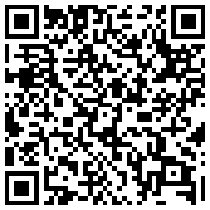
Categories
Money money money...
Could we help you? Please click the banners. We are young and desperately need the money



Categories: Common Web Development, CSS, IT Development, IT Knowledge
Author: Miljan Puzovic
Create a Pure CSS Star Rating System - No JavaScript Required



Creating an interactive star rating system can be a daunting task, especially for beginners. Many tutorials and solutions involve JavaScript, which can add unnecessary complexity. However, it's entirely possible to create a functional and visually appealing star rating system using only HTML and CSS. In this tutorial, we'll show you how to achieve this with a step-by-step guide. The full working example can be found on JSFiddle.
Why Use Pure CSS for Star Ratings?
Using pure CSS for star ratings has several benefits:
- Simplicity: No need to write or debug JavaScript code.
- Performance: CSS is faster to load and execute than JavaScript.
- Accessibility: Ensures that the rating system is accessible even if JavaScript is disabled.
- SEO: Search engines can crawl and index CSS easier than JavaScript.
Understanding the HTML Structure
The HTML structure consists of a <div> containing radio buttons and labels. Here's the basic structure:
<div class="rating-stars-wrapper">
<input type="radio" name="rating-stars" value="5" id="id-5">
<label for="id-5"></label>
<input type="radio" name="rating-stars" value="4" id="id-4" checked>
<label for="id-4"></label>
<input type="radio" name="rating-stars" value="3" id="id-3">
<label for="id-3"></label>
<input type="radio" name="rating-stars" value="2" id="id-2">
<label for="id-2"></label>
<input type="radio" name="rating-stars" value="1" id="id-1">
<label for="id-1"></label>
</div>Each radio button represents a rating value from 1 to 5. The corresponding labels will be used to display the stars.
Styling the Star Ratings with CSS
The CSS is where the magic happens. Let's break down the key parts of the styling:
Wrapper Styling
.rating-stars-wrapper {
display: flex;
flex-direction: row-reverse;
justify-content: center;
width: fit-content;
}We use flex-direction: row-reverse to reverse the order of the radio buttons. This allows us to target the stars after the checked one.
Hiding the Radio Buttons
input[type="radio"] {
display: none;
}The radio buttons are hidden from view but remain functional.
Label Styling
label {
cursor: pointer;
font-size: 40px;
color: red;
}
label:before {
content: '\2606'; /* Unicode for empty star */
position: relative;
}The labels are styled to look like stars. The :before pseudo-element is used to insert the star character.
Checked Star Styling
input[type="radio"]:checked ~ label:before {
content: '\2605'; /* Unicode for filled star */
opacity: 0.7;
}When a radio button is checked, the corresponding star and all previous stars are filled.
Hover Effect
.rating-stars-wrapper label:hover:before,
.rating-stars-wrapper label:hover ~ label:before {
content: '\2605';
opacity: 0.7;
}The hover effect changes the stars to filled when hovered over.
Maintaining State
.rating-stars-wrapper:not(:hover) input[type="radio"]:checked ~ label:before,
.rating-stars-wrapper:hover input[type="radio"]:hover ~ label:before {
opacity: 1;
}This ensures that the checked star remains filled even when not hovered over.
Conclusion
By using this pure CSS solution, you can create a star rating system that is simple, efficient, and accessible. This method leverages the power of CSS to handle interactivity without the need for JavaScript, making it an excellent choice for web developers of all levels.
